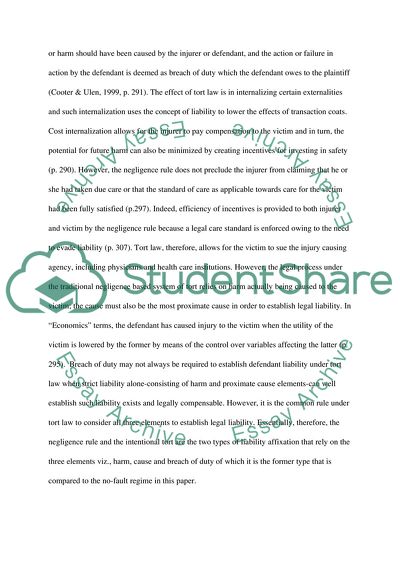Cite this document
(The Deficiencies in Common Tort Law as Applicable to Medical Research Paper - 1, n.d.)
The Deficiencies in Common Tort Law as Applicable to Medical Research Paper - 1. Retrieved from https://studentshare.org/law/1746422-is-a-no-fault-regime-better-than-a-negligence-rule-as-a-way-of-dealing-with-the-causes-and-consequences-of-medical-error
The Deficiencies in Common Tort Law as Applicable to Medical Research Paper - 1. Retrieved from https://studentshare.org/law/1746422-is-a-no-fault-regime-better-than-a-negligence-rule-as-a-way-of-dealing-with-the-causes-and-consequences-of-medical-error
(The Deficiencies in Common Tort Law As Applicable to Medical Research Paper - 1)
The Deficiencies in Common Tort Law As Applicable to Medical Research Paper - 1. https://studentshare.org/law/1746422-is-a-no-fault-regime-better-than-a-negligence-rule-as-a-way-of-dealing-with-the-causes-and-consequences-of-medical-error.
The Deficiencies in Common Tort Law As Applicable to Medical Research Paper - 1. https://studentshare.org/law/1746422-is-a-no-fault-regime-better-than-a-negligence-rule-as-a-way-of-dealing-with-the-causes-and-consequences-of-medical-error.
“The Deficiencies in Common Tort Law As Applicable to Medical Research Paper - 1”, n.d. https://studentshare.org/law/1746422-is-a-no-fault-regime-better-than-a-negligence-rule-as-a-way-of-dealing-with-the-causes-and-consequences-of-medical-error.


